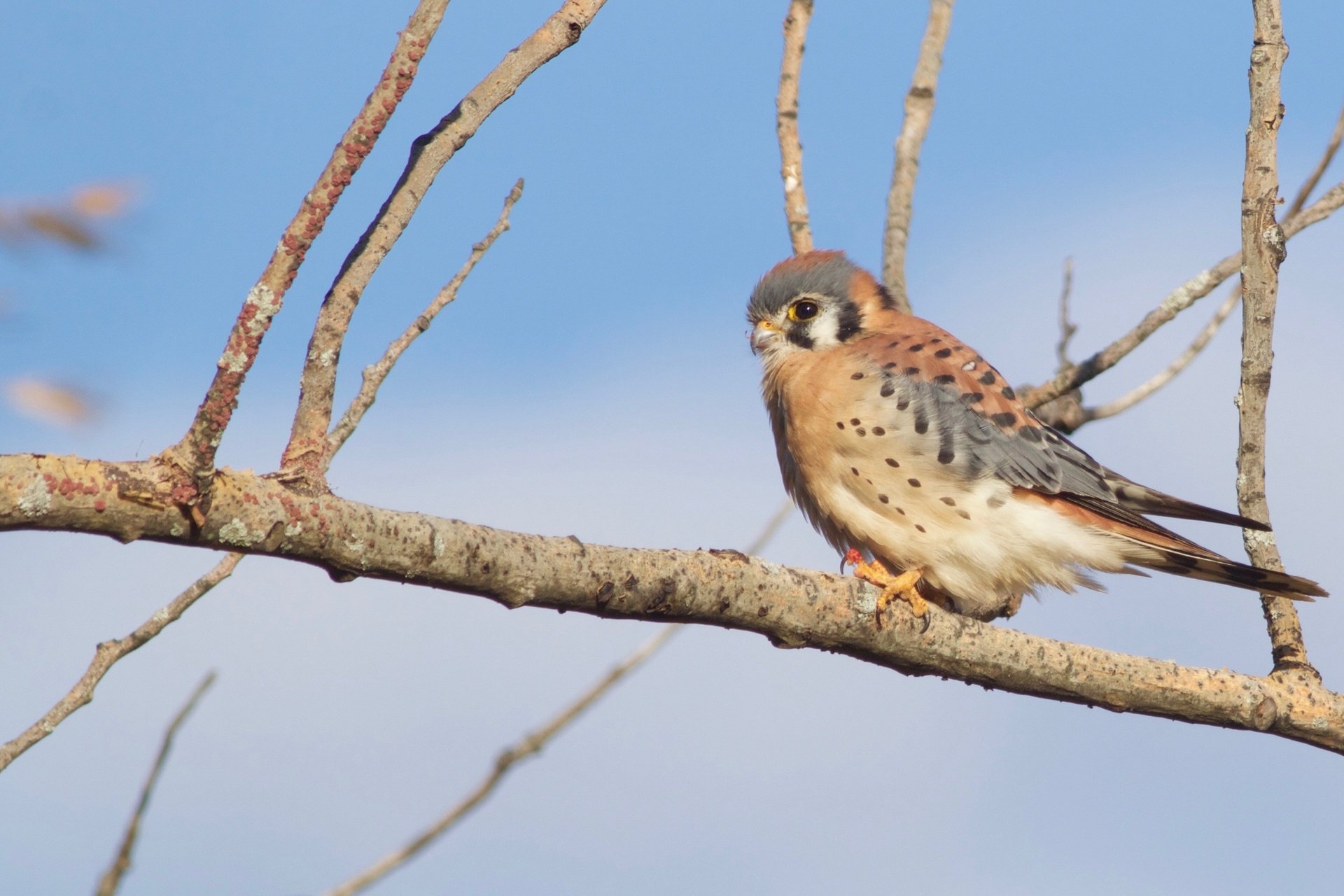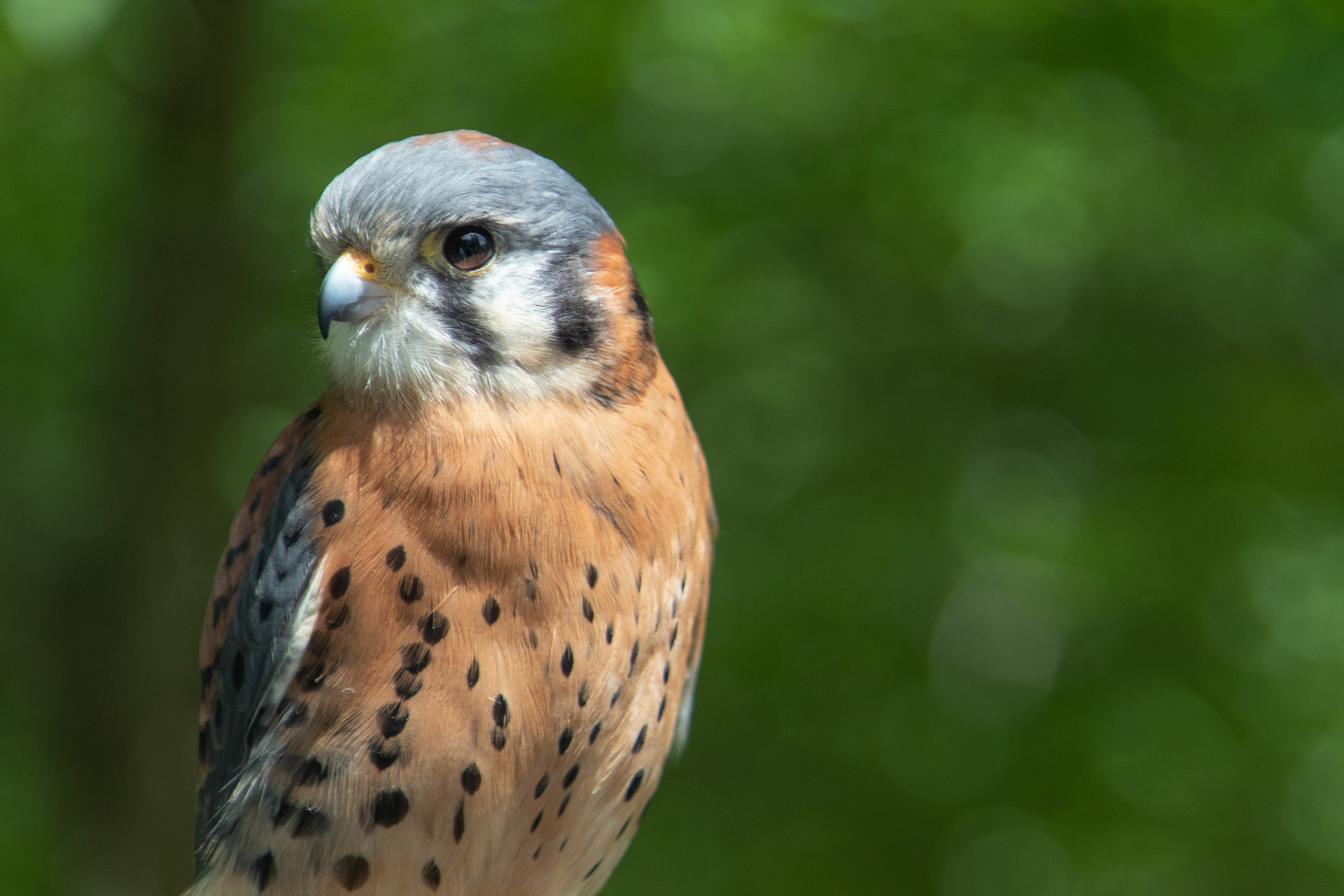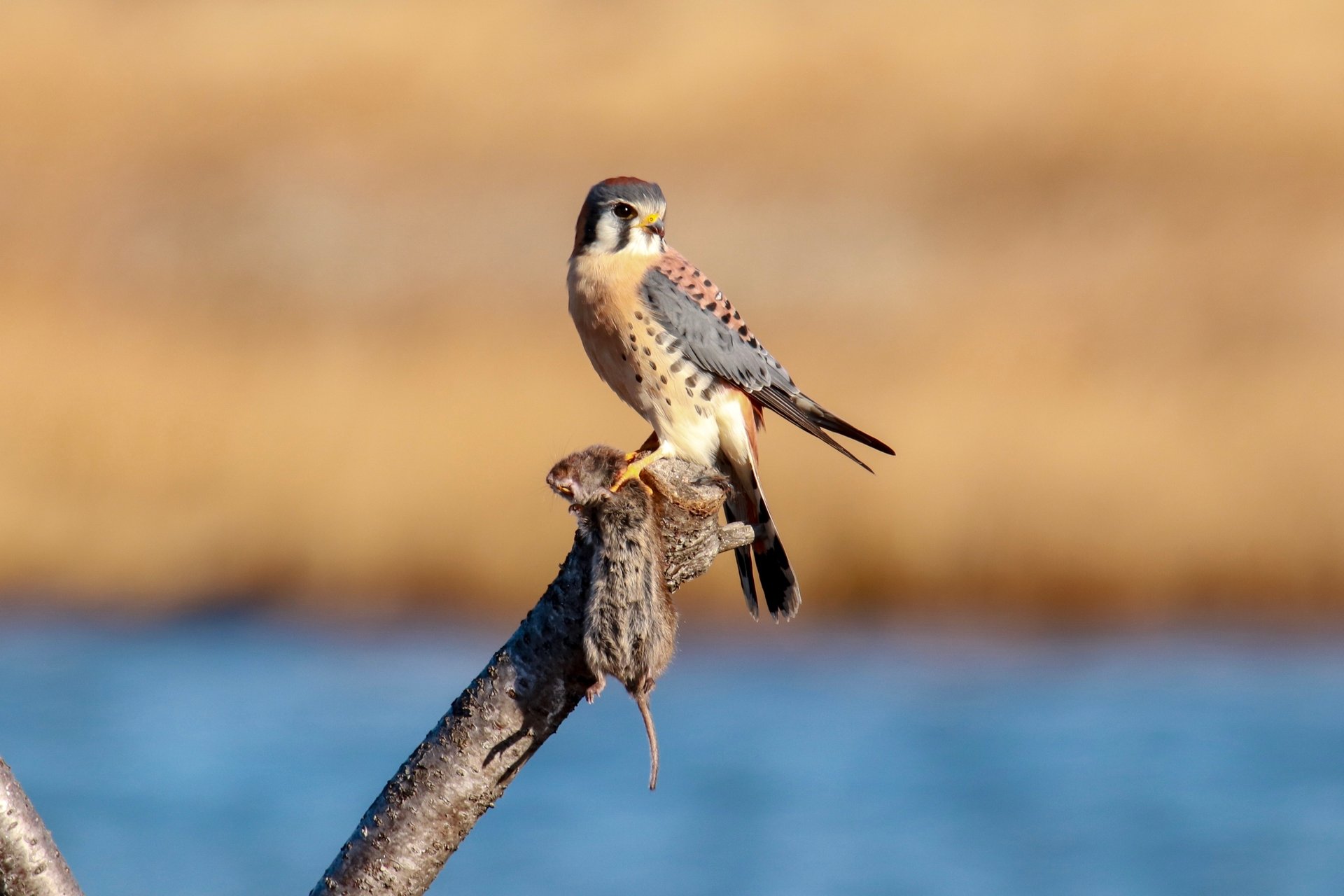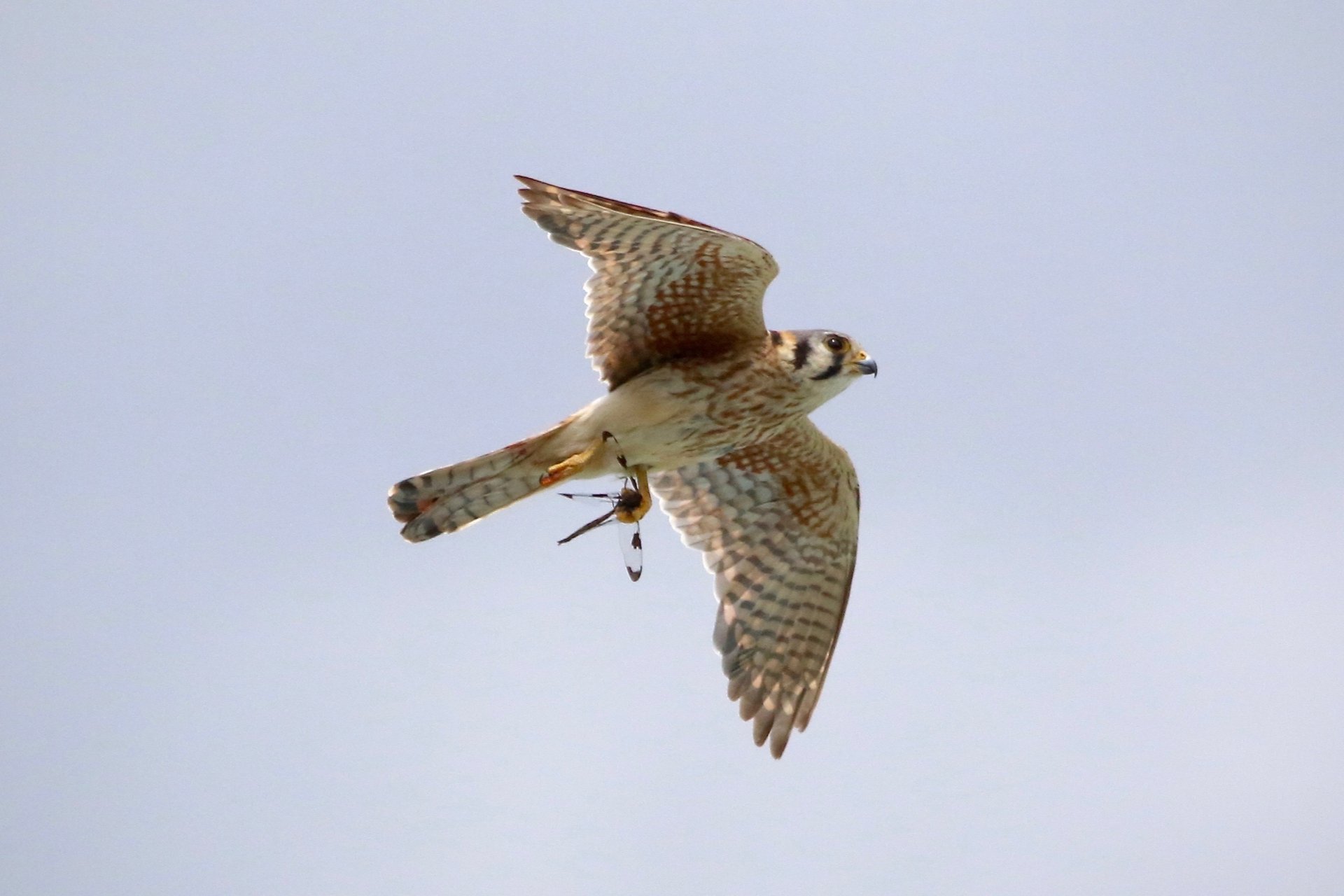Birds in Massachusetts
American Kestrels
American Kestrels are North America’s smallest falcons. Although they are birds of prey, the American Kestrels measures just 9 inches from head to tail—about the size of an American Robin or Blue Jay.
How to Identify American Kestrels
The male is dramatically colored with a rufous back, blue-gray wings, and a speckled breast. The face is boldly patterned with a mustache stripe below the bill. The female is similar to the male but lacks its blue-gray wings, and the chest markings are more pronounced. American Kestrels are North America’s smallest falcons. Although they are birds of prey, the American Kestrels measures just 9 inches from head to tail.
They can often be seen perched on a fencepost or snag, bobbing their tail as they survey their surroundings. When a good perch is not available, it hunts from the air, hovering in place in a technique called “kiting.”
American Kestrel Life Cycle
Kestrel nest sites are found in cavities, usually dead trees, but also in nest boxes and even holes in buildings. The male will prospect for nest sites, then show them to the female who makes the final choice. She lays 4-6 eggs directly on the bottom of the cavity without adding any nesting material.
The eggs are incubated by both parents for 28–31 days. The young are born naked and helpless and are brooded primarily by the female while the male brings food. The young fledge at about four weeks, but the parents continue to feed the young for up to two weeks after fledging.
American Kestrels will migrate south to Central America or the southern United States for the winter, however can be found in Massachusetts year-round.
What Do American Kestrel’s Eat?
Kestrels eat primarily insects and other invertebrates but will take rodents and small birds when possible. Grasshoppers are also a favorite of theirs.
American Kestrel Call
Where Can I See American Kestrels?
American Kestrels are birds of open fields and meadows. They are long-distance migrants, with many overwintering in Central America or the southern United States. April is usually the best time to look for migrating kestrels in Massachusetts, although they can be found year-round.
Threats Facing American Kestrels
A Species of Greatest Conservation Concern
American Kestrels have undergone widespread population declines, particularly in the Northeast United States. Although nationally it is listed as a species of least concern, they are included as a Species of Greatest Conservation Concern in the wildlife action plans of all six New England states.
The specific causes of American Kestrel declines are not well understood, but almost certainly include habitat loss, pesticide use, and climate change.
How Mass Audubon Supports American Kestrels
Grassland Habitat Conservation
We're expanding grassland habitats at sanctuaries across the state to support the American Kestrel and other grassland birds. Ipswich River Wildlife Sanctuary, for example, has added additional acreage of open fields and a nest box for kestrels over the last few years.
Motus Wildlife Tracking Data Collection with Mass. Division of Fisheries and Wildlife
Mass Audubon works with the Massachusetts Division of Fisheries and Wildlife to track the movement of American Kestrels through the Motus Wildlife Tracking Network as they migrate to and from their wintering grounds. Through this project we are learning about individual movements while breeding in Massachusetts and gaining migratory connectivity data after they leave Massachusetts. The data gained in this project will offer more insight into the specific threats facing kestrels and enable more effective management and protection of habitat.
How You Can Support American Kestrels in Massachusetts
Installing nest boxes is one way to support breeding American Kestrels. If you choose to install a nest box for kestrels ensure you are following recommended guidelines.
Mass Audubon supports birds like the American Kestrel every day, but we couldn’t do it without the support of our 160,000+ members.
Help support American Kestrels, and birds like them, by becoming a member today.
Upcoming Bird Programs
See MoreFamily Winter Birding
-
Boston Nature Center and Wildlife Sanctuary, Mattapan
-
9 classes starting
Saturday, January 3
10:30am-12:00pm
Families - children 0 - 17
Owl Prowl
-
Long Pasture Wildlife Sanctuary, Cummaquid
-
Saturday, January 3
3:30-5:00pm
Adults & Families - 10 - 17
Full Moon Owl Prowl
-
Felix Neck Wildlife Sanctuary, Edgartown
-
Saturday, January 3
4:15-5:15pm
Adults & Families - 0 - 17
Stay Connected
Don't miss a beat on all the ways you can get outdoors, celebrate nature, and get involved.






